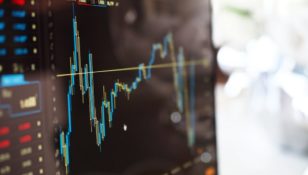Day Trading: A Comprehensive Guide to the Art of Short-Term Investing

Introduction
Day trading has become increasingly popular among investors looking to make quick profits in the financial markets. In this article, we will provide a thorough overview of day trading, explain its different types and popular strategies, discuss quantitative measurements, analyze the differences between various day trading approaches, and offer a historical review of the pros and cons associated with this form of trading.
I. What is Day Trading?
Day trading refers to the practice of buying and selling financial instruments within the same trading day, aiming to profit from short-term price fluctuations. Unlike long-term investors who hold positions for months or years, day traders capitalize on the volatility of the markets, leveraging small price movements to generate quick returns.
II. Types of Day Trading

There are several types of day trading strategies employed by traders. Some popular ones include:
1. Scalping: This strategy involves making numerous trades in a short period, aiming to capture small price differentials. Scalpers often hold positions for just a few seconds to a few minutes, relying on high trading volumes and tight spreads to generate profits.
2. Momentum Trading: Momentum traders focus on stocks or other instruments that are experiencing significant price movement or exhibiting strong trends. They aim to ride the momentum, entering positions when the price shows clear upward or downward movement, and exiting when the trend weakens or reverses.
3. Range Trading: Range traders identify price levels where a security tends to trade within a certain range over a defined period. They buy near the support level and sell near the resistance level, aiming to profit from the repetitive nature of price movements within the range.
4. News-based Trading: Traders who follow this strategy capitalize on significant market-moving news or events. By analyzing the impact of news on specific stocks or industries, they enter positions anticipating price movements triggered by the news.
III. Quantitative Measurements in Day Trading
Day trading often involves analyzing and interpreting various quantitative measurements to make informed trading decisions. Some common quantitative tools used by day traders include:
– Technical Analysis: Traders use technical indicators, chart patterns, and price action analysis to identify potential entry and exit points. The use of moving averages, relative strength index (RSI), and Bollinger Bands are common in day trading analysis.
– Volume Analysis: Analyzing trading volumes helps day traders identify periods of high activity, confirming trends or potential reversals. It provides insights into market liquidity and can indicate the strength or weakness of a trend.
IV. Differences Between Day Trading Approaches
While day trading in general involves short-term trading and quick decision-making, different approaches can vary in terms of time frames, emphasis on technical versus fundamental analysis, and risk tolerance.
1. Intraday Trading vs. Swing Trading: Intraday traders focus on taking advantage of intraday price movements and close all positions by the end of the day. Swing traders hold positions for several days or weeks, aiming to capture larger price movements.
2. Technical Analysis vs. Fundamental Analysis: Technical analysis relies primarily on price and volume data to make trading decisions, while fundamental analysis incorporates factors such as company financials, news, and economic indicators.
3. High-Frequency Trading vs. Discretionary Trading: High-frequency traders use sophisticated algorithms and powerful computers to execute trades at lightning-fast speeds. Discretionary traders, on the other hand, rely on their judgment and experience to make trading decisions.
V. Historical Review of the Pros and Cons of Day Trading
Day trading has its share of advantages and disadvantages. Understanding the historical trends can provide valuable insights for aspiring day traders.
Advantages:
– Potential for quick profits: Day traders can generate substantial returns by capitalizing on short-term price fluctuations.
– Accessibility: Day trading can be done from anywhere with an internet connection, making it accessible to a wide range of individuals.
– Flexibility: Day trading allows individuals to choose their own trading hours and adapt their strategies as market conditions change.
Disadvantages:
– High Risk: Day trading carries a high risk due to the leverage involved and the speed at which decisions must be made.
– Emotional Stress: The fast-paced nature of day trading can lead to emotional stress and erratic decision-making.
– Time Commitment: Successful day trading requires significant time commitment for research, monitoring markets, and executing trades.
[INSERT VIDEO HERE]
Conclusion
Day trading presents an exciting opportunity for investors aiming to profit from short-term market movements. By understanding different day trading strategies, quantitative measurements, variations in approaches, and the historical pros and cons, individuals can make informed decisions and increase their likelihood of success. However, it is crucial to remember that day trading requires dedication, discipline, and continuous learning to navigate the complex world of short-term investing.

















